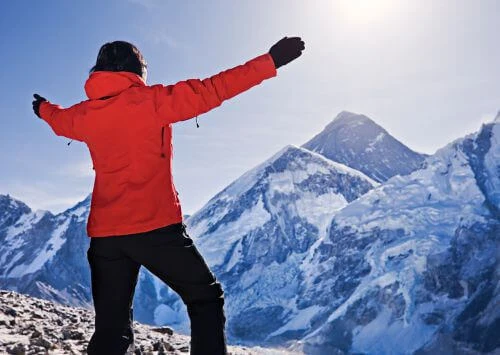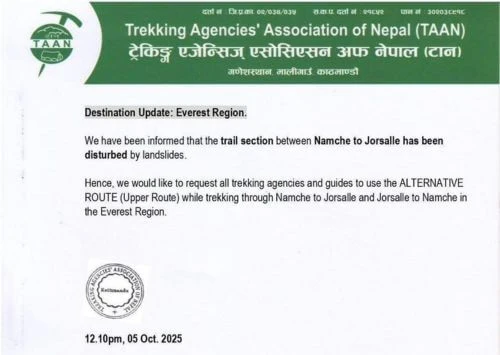Nepal Trekking Styles
For people all around the world “Trekking” is still the Number One activity in Nepal. Trekking in Nepal truly is an awe-inspiring experience for anyone who decides to come to Nepal for trekking in the shadows of the Himalayas and the deep valleys of the Himalayan Region.
Nepal undoubtedly has so much to offer for trekkers who enter its magical realm. From the view of the imposing summits seemingly floating miles in the sky above to rising early for a peek at the sun slowly ascending behind the highest mountains in the world, everything just adds more contrast to the beauty of Trekking in Nepal. Going through the upper regions one can witness delightful sight of glaciers down below along with trails that take you side by side with the friendly locals of that region. The whole country has regions perfect for trekking purposes where the classic trails have still not been altered. That’s why trekkers can experience the exact routes, the past trekkers used while on their way to various High Himalayas. Rising above we get closer and closer to the Himalayas with more glorious mountain views, running ahead of the yak trains over brightly decorated swing bridges swaying high above chalky turquoise-colored raging glacial rivers, coming to rest mid-afternoon at night stop.
Typically here in Nepal, there are three main styles’ of trekking. Each one is different from the other one, so the style you want will be determined by what you want/prefer. Also you should consider various things before choosing your style of trekking like the place you want to go, available time for trek, budget and other personal preferences.
So here are the types of Trekking Style in Nepal:
Teahouse trekking with a guide.
Teahouse Trekking has become very vast and popular in these past years. Therefore it is no surprise that teahouse trekking with a guide is being preferred by many tourists’ nowadays. Everest, Annapurna and Langtang areas have majorly focused in improving their Teahouses and Lodges in the demand of growing tourists every year in these regions. One can say it is a major draw card for tens of thousands of trekkers who want to experience trekking in a very convenient way. Recent years have also seen the development of more basic teahouse facilities in Kanchenjunga, Makalu, Rolwaling, Manaslu, Tamang Heritage Trail and Mustang regions, all of which offer an authentic Nepali trekking experience. Because it’s a common fact that large teahouses with comfortable communal dining rooms, private bedrooms with mattresses and bedding, extensive menus or specialty restaurants and bakeries can make a trek very comfortable experience. The need of guide is very necessary if you want your trek to run smoothly so one can also that a guide is very necessary while trekking in Nepal. But it’s suggested to make sure your guide has been to, or preferably comes from, the area where you want to trek. The role of a guide can encompass a great many activities. Apart from being the person who escorts you along the trail, they can often explain customs, culture, history, flora and fauna which you might want to know. A guide also manages any porters and ensures if your accommodation is booked, transport is confirmed, and that the food is well prepared. So that your trek becomes a memorable journey for you to experience and remember. Remember that the convenience of having someone with local knowledge handling routine details such as where to stay, negotiating prices, and giving route directions is a great peace of mind.

Trekking with a camping crew.
Trekking in Nepal before was done mainly by camping. So it’s the most flexible, comfortable and hygienic way to explore the Himalaya. Trekking with a camping crew has many advantages such as having unrestricted access to trails, viewpoints, and passes to be self-sufficient, with the support of a team of experienced staff. The only drawback is that you might have to share a tent with someone you would rather not sleep next to. But other than that it will be a pleasant experience. For many trekkers, their first trip to Nepal will be teahouse-based, but the lure of what lies beyond the main trails is so strong they return for a camping trek, often to the more remote areas.
Shower, toilet and dining tents with tables and chairs complete your campsite and comfort comes courtesy of a foam mattress and pillow. In fact, camping in Nepal is frequently more comfortable and less crowded than teahouses! With the increasing popularity of teahouse trekking, companies that specialize in camping treks are becoming more competitive so it is important to check the details of your trek before you depart. The main advantage, however, is being able to explore remoter regions away from the main trails and meet some of the inhabitants of the wild Himalaya. It is hard to believe that there are still many villagers who have never seen a tourist, where communities greet you as an honored guest and not as an opportunity to make another buck. So many trekkers feel this style of trekking more real and genuine than other Nepal trekking styles.

Independent trekking Without a Guide.
This style of trekking is not very much recommended in Nepal so it’s not very popular like the Teahouse Trek and Camping Treks. Normally this kind of trekking is preferred by people who always wanted to trek independently, to finding one’s own way and living off the land. Due to the nature of independent trekking it is normally a good idea to trek with a friend or in a small group of up to four for safety. Being an independent trekker doesn’t mean to say that you cannot have a porter or a porter/guide. The introduction of the TIMS (Trekkers Information Management System) has made this option a little more complicated, but it is still possible to employ a local for almost any period of time, which can make tricky navigation and strenuous sections considerably easier.
Most independent trekkers prefer to trek the main routes of the Annapurna, Everest, Langtang, Makalu, Manaslu, Mustang, Rolwaling and Tamang Heritage Trail areas as they offer teahouse accommodation and a standardized menu. Trails in these areas are well marked and some of the local people speak enough of a range of languages that the individual trekker can get along with the most basic Nepali. Even though you may walk on your own, or with a local porter, it is in fact very rare that you will find yourself without company, especially in the evenings when you sit in the teahouse communal dining room. The main trails are normally busy with local traffic so if you carry a pocket guide and map it is unlikely that you’ll take a serious wrong turn, although getting a little lost is almost inevitable. There are a few drawbacks to independent trekking: coping with altitude and health problems on your own, logistical challenges, communication issues and safety concerns. None of these is insurmountable but they do need to be taken seriously both before and during your trek.
If this is going to be your first visit to the Himalaya the independent option probably isn’t the best style to kick off your adventures, unless you are the ultimate intrepid traveler and you stay on the main trails.





